[Click on BLUE links for sources and more information]
I hate scarce smiles, I love laughing.
William Blake annotations to Aphorisms on Man by Johann Caspar Lavater
Several have defined man as “an animal which laughs.”
In 1971 a golden record accompanied the Voyager 1 and Voyager 2 spacecrafts that headed into the outer solar system. The record carried distinctive sounds and images from earth with the idea that someday, perhaps millions of years hence, the recordings would be deciphered by an alien race somewhere far far away. Human laughter was considered important enough to make the recording. (Apes and rats are the only other animals known to laugh.) Last year on the fortieth anniversary of the Voyager Mission the mystery of whose laughter was on the recording was solved. It was, as best can be determined, the laughter of astrophysicist Carl Sagan.
Many of the napkin artists in the Sea Gull Cellar Bar during the 70s and 80s were humorists, particularly Max Efroym, Jack Haye and Roy Hoggard. All the napkin artists produced at least a few pieces capable of soliciting the kind of laughter that William Blake loved.
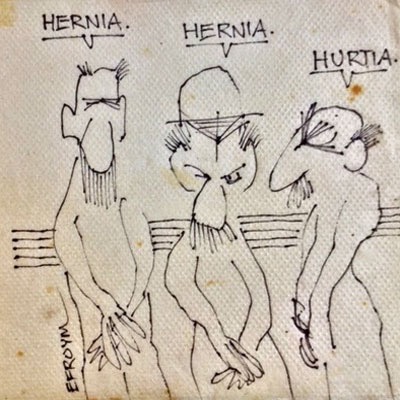
Sea Gull Cellar Bar Napkin Art, Max Efroym artist
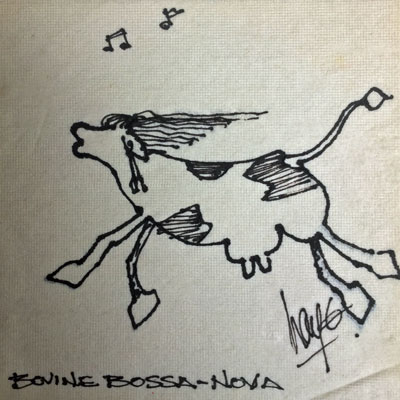
Sea Gull Cellar Bar Napkin Art, Jack Haye artist
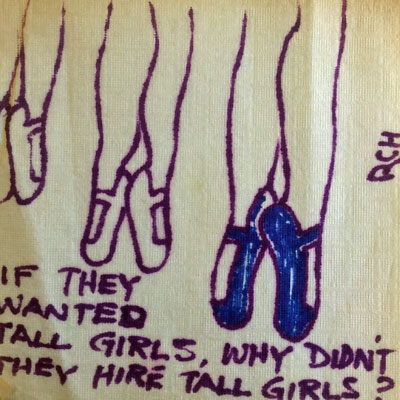
Sea Gull Cellar Bar Napkin Art, Roy Hoggard artist
Laughter is clearly important to us. It seems to be carefully coordinated with speech, perhaps by necessity. Laughter is instinctive behavior programmed by our genes. People have been known to laugh while having sex. Most laughter follows speech and usually doesn’t mix with it for obvious reasons although there are examples of laughspeak, “a form of blended, laughing speech that communicates emotional tone”.
Consider the facts: We eat, drink, breathe, belch, vomit, and talk through the same orifice, a plumber’s nightmare with sharp teeth at one end. Is this any way to design an organism? We must stop breathing to swallow—or suffer severe consequences. (Babies can simultaneously breathe and nurse during the early months of life.) Likewise, breathing must cease when we speak. And we must choose whether we would rather speak or eat. The only way we are able to live with such an inefficient mechanism is through an ingenious time-sharing program. Robert Provine, Laughter: A Scientific Investigation
Plato thought undisciplined laughter was subversive and could threaten the stability of the state, something to keep in mind during bizarre political times like the present. Laughing is typically a social activity and it is capable of moving crowds.
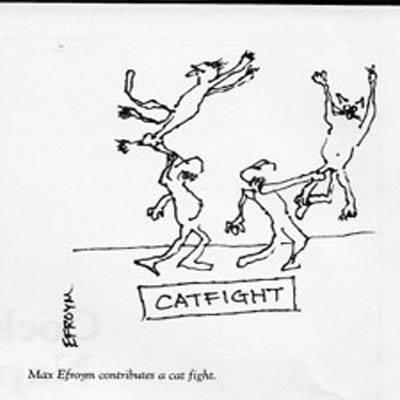
Sea Gull Cellar Bar Napkin Art, Max Efroym artist
Laugh, and the world laughs with you; weep, and you weep alone.
Ella Wheeler Wilcox, Solitude
Henri Bergson pointed out that laughing is first and foremost a social activity. I find myself laughing out loud alone sometimes when I’m thinking or reading? Am I an exception? I don’t think so. I’m not really alone, I suppose, but accompanied (at least mentally) by the author or the people I’m thinking about.
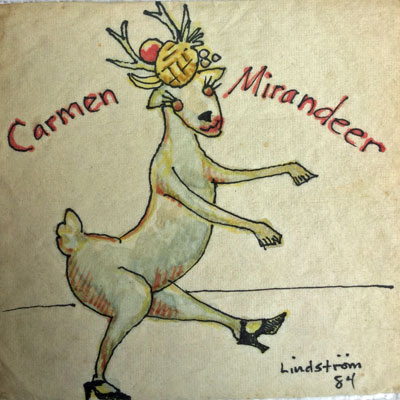
Sea Gull Cellar Bar Napkin Art, Sandra Lindstrom artist
Laughter, like speech, is a vocal signal that we seldom send unless there is an audience. Danish philosopher Søren Kierkegaard noted the rarity of solitary laughter when he inquired of a friend, “Answer me honestly… do you really laugh when you are alone?” Kierkegaard concluded that you have to be “a little more than queer” if you do. Indeed, laughter is the quintessential human social signal. Laughter is about relationships. Robert Provine, Laughter: A Scientific Investigation
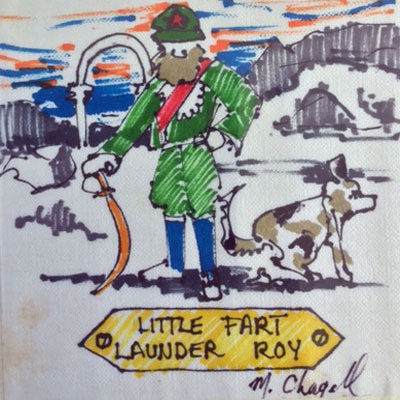
Sea Gull Cellar Bar Napkin Art, James Maxwell artist
People can appear laughable when they see themselves as wealthier, more handsome, or smarter than they really are. That is, when their self image is a “joke” in the opinion of the observer. [Think of our current President.] Several famous thinkers have given serious thought to how and why laughter is so important to us including Plato, Aristotle, Descartes, Hobbes, Kant, Schopenhauer, Darwin, Freud, and Bergson. Hobbes “offers laughter as a victorious crowing, the vocal equivalent of a triumphant flamenco dance stomped out on the chests of fallen adversaries” according to Robert Provine.
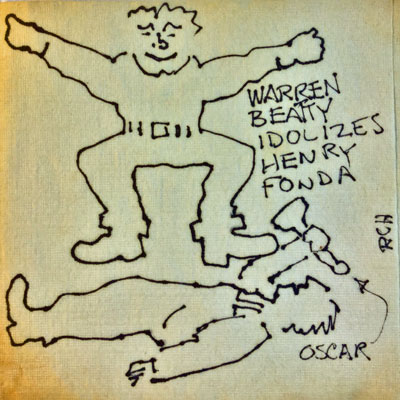
Sea Gull Cellar Bar Napkin Art, Roy Hoggard artist
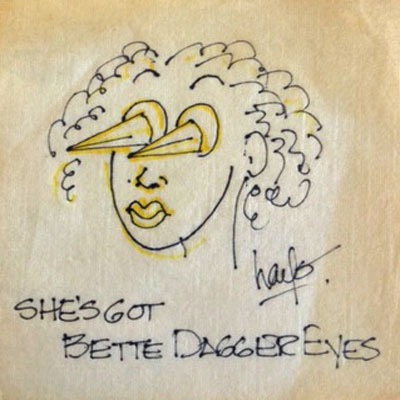
Sea Gull Cellar Bar Napkin Art, Jack Haye artist
Dark humor, Schadenfreude, satire and even the macabre (think of how Mexico celebrates the dead through the art of Jose Guadalupe Posada) can elicit laughter. Or, the earthy rabelaisian humor of exaggeration and slap stick comedy.
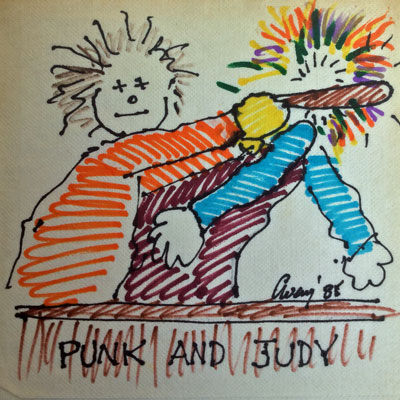
Sea Gull Cellar Bar Napkin Art, Bob Avery artist

Sea Gull Cellar Bar Napkin Art, Roy Hoggard artist
Pure silliness is more than enough to evoke laugher in the observer.
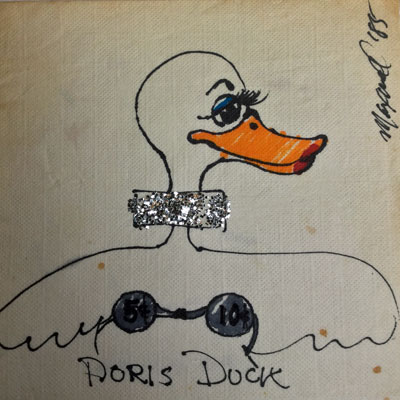
Sea Gull Cellar Bar Napkin Art, James Maxwell artist
While many think laughter carries health benefits (although proof is not definitive), laughter did not evolve for this purpose. According to Robert Provine “laughter no more evolved to make his feel good or improve our health than walking evolved to promote cardiovascular fitness … laughter evolved because of its effect on others, not to improve our mood or health.” The health benefits, if real, are a secondary coincidence.
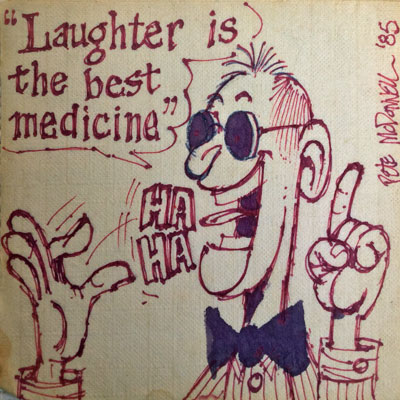
Sea Gull Cellar Bar Napkin Art, Pete McDonnell artist
Don’t focus on the health benefits. If laughing makes you feel better, and others too, go ahead and laugh.
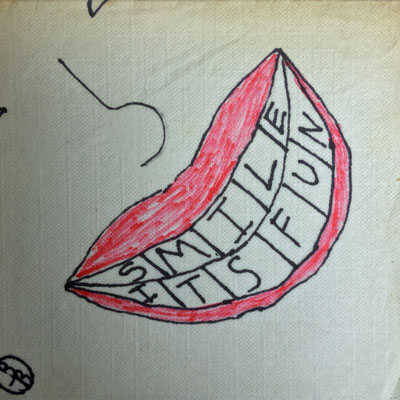
Sea Gull Cellar Bar Napkin Art, BB artist
Or, at least smile.
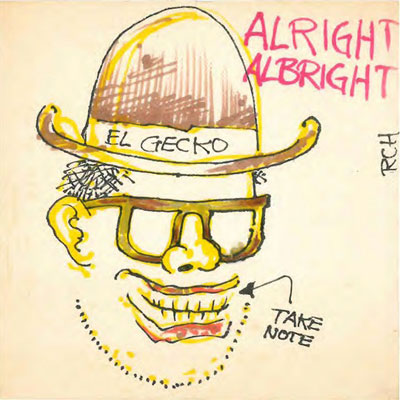
Sea Gull Cellar Bar Napkin Art, Richard Albright artist
Laughing Song
William Blake
When the green woods laugh with the voice of joy,
And the dimpling stream runs laughing by;
When the air does laugh with our merry wit,
And the green hill laughs with the noise of it;
when the meadows laugh with lively green,
And the grasshopper laughs in the merry scene,
When Mary and Susan and Emily
With their sweet round mouths sing “Ha, ha he!”
When the painted birds laugh in the shade,
Where our table with cherries and nuts is spread:
Come live, and be merry, and join with me,
To sing the sweet chorus of “Ha, ha, he!”
Whatever you do, whether you are a laugher or not, just remember, a good sense of humor is better than being a snit.
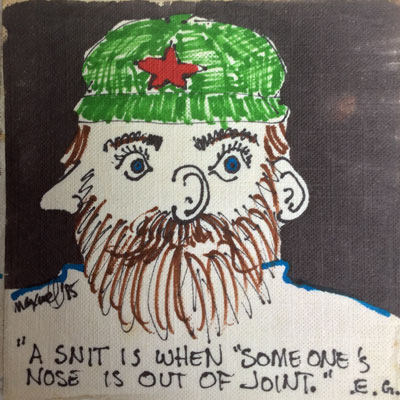
Sea Gull Cellar Bar Napkin Art, James Maxwell and Estelle Grunewald artists
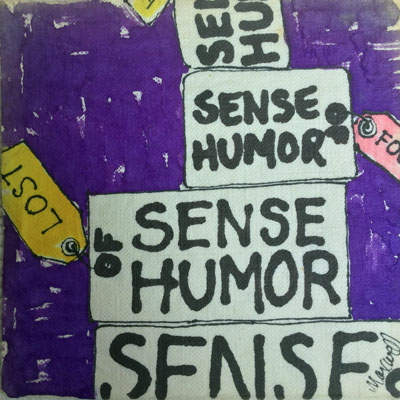
Sea Gull Cellar Bar Napkin Art, James Maxwell artist

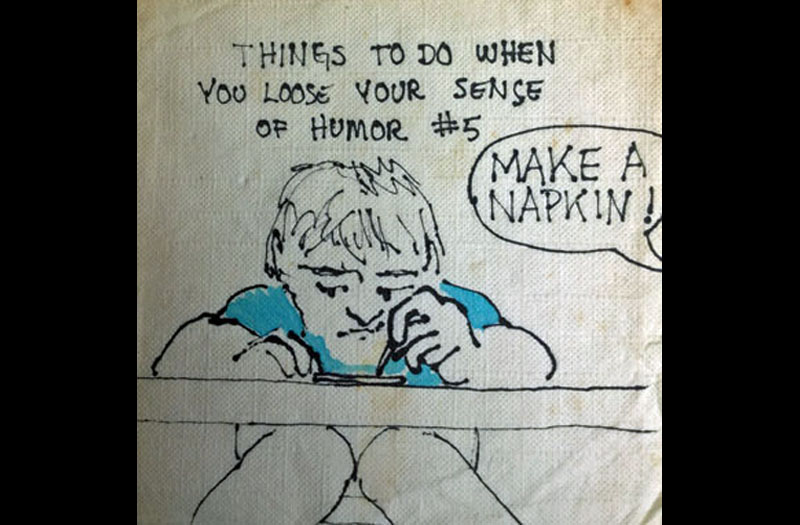
In his interview with David Remnick of the New Yorker, James Comey mentioned that he never heard Trump laugh.
I laughed out loud when I saw Max signed the napkin M.Chagall.Thanks for another great blog entry. Be well!
Is it possible some art critic of note could discover the Mendocino school while Roy Hoggard and Sandra are still alive?1? . . . This art is precious! –beth bosk
Hey Dave….sorry I’ve been gone for a while….life has been hard for me. I wanted to say that I LOVE Little Fart Launder Roy…..CLASSIC! I hope to see you at ARI one of these evenings….
A truly original piece, David. Bravo!